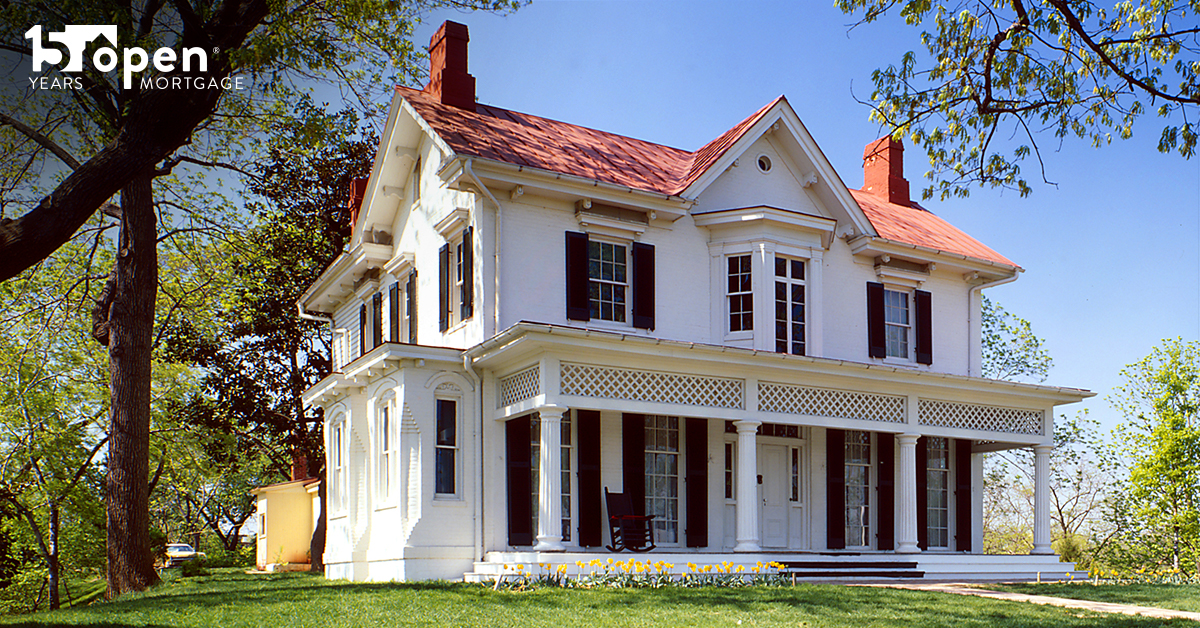
Homes of Famous African-Americans
February marks a time of reflection in the history of our country, and this Black History Month, we celebrate the triumphs of African American heroes. Through grit and incredible resolve, many became homeowners despite incredible odds and extreme racial prejudice. Below, we recognize the men and women that helped make strides in many aspects of social justice, which includes the right to own a home of one’s own.
Harriet Tubman
The famed Underground Railroad abolitionist, armed scout and spy for the United States Army during the American Civil War lived in this two-story house in Auburn, New York from 1859-1886. Tubman purchased the home from New York Senator William Seward in 1858 for $1,200. The once all-wooden structure was rebuilt with brick after partially being destroyed by fire in 1886.

Rosa Parks
This once home of Civil Rights activist Rosa Parks narrowly escaped destruction in 2016. Following Parks’ famous refusal to give up her seat to a white passenger on a bus in Montgomery, Alabama in 1955, she faced death threats and found it difficult to find employment. So she headed north to Detroit, moving in with her brother’s family at the three-bedroom house in 1957. In 2016, the abandoned house was in bad shape, in danger of being demolished. That’s when Parks’ niece connected with Berlin-based American artist Ryan Mendoza, who raised money to rescue the house and move it overseas to Berlin, where it currently stands as an art exhibit and testament to the Civil Rights period in the United States.

Martin Luther King, Jr.
Before he became a minister, activist and national icon, Martin Luther King, Jr. was born in this two-story frame Queen Anne-style house in Atlanta, Georgia on January 29, 1915. Purchased by his grandfather in 1895, the family lived at the house until 1931, when the house stayed in the King family as a rental property. The home now resides as part of a national park dedicated to the American Civil Rights hero; visitors can take tours of the home 10 a.m. to 4 p.m. daily.

Daisy Bates
This house—now known as the “Daisy Bates Home”—became a National Historic Landmark based on its role as the command post during the desegregation crisis at Little Rock’s Arkansas Central High School in the fall of 1957. Mrs. Daisy Bates served as a mentor to the group of students that came to be known as “The Little Rock Nine” in her role as Arkansas’ NAACP president, and her home served as the official pick-up and drop-off site for the students each school day. This made the house a target to violence from those against desegregation, and the Bates endured through cross-burnings and rocks thrown through the windows. Today the home is available for tours scheduled in advance through the National Park Service.

Frederick Douglass
This house, called Cedar Hill, was the final home of Frederick Douglass, who lived there from 1877 until he passed away in 1895. Though he began his life in slavery and endured brutal conditions, Douglass eventually made a daring escape to freedom as a young man. As a free man, he became an anti-slavery lecturer, later publishing his seminal book Narrative of the Life of Frederick Douglass. He spent the later years of his life in Washington, D.C., where he purchased his house and surrounding land, paying $6,700 to the Freedmen’s Savings and Trust company. Now part of the National Park Service, tours are available for visitors.

Mary McLeod Bethune’s Council House
This home of Mary McLeod Bethune represents the legacy of a woman who dedicated her life to advancing interests of African American women. Her Washington, D.C. townhome became the first headquarters to the National Council of Negro Women (NCNW), serving as a home and a place of business. The NCNW received many prominent visitors and served as the site of meetings related to integration and desegregation around the country. Programs dedicated to addressing issues like inadequate housing and discrimination were launched from the headquarters. Now a National Historic Site, it houses archives dedicated to the history of African American women.

Shelley House
The house may be unassuming in appearance, but its purchase by an African American family put it at the center of an historical Supreme Court case that highlighted racial injustice in housing. When J.D. Shelley and his family were looking to buy a home in St. Louis, Missouri in 1945, they found themselves barred from buying in certain areas due to “racially restrictive covenants by which the building owners agreed not to sell to anyone other than a Caucasian.” Shelley found a willing seller who agreed not to enforce the covenant, and purchased the home above. He was subsequently sued by property owner Louis D. Kraemer, who hoped to prevent the Shelleys from moving in. The case eventually made its way to the Supreme Court, which ruled that the courts could not enforce the racially restrictive covenant, as it denied due process of law and therefore violated the 14th Amendment. Though it would be two decades before the Fair Housing Act meant legal equality for African American homeowners, the bravery of J.D. Shelley created a major stepping stone and legal precedent.






